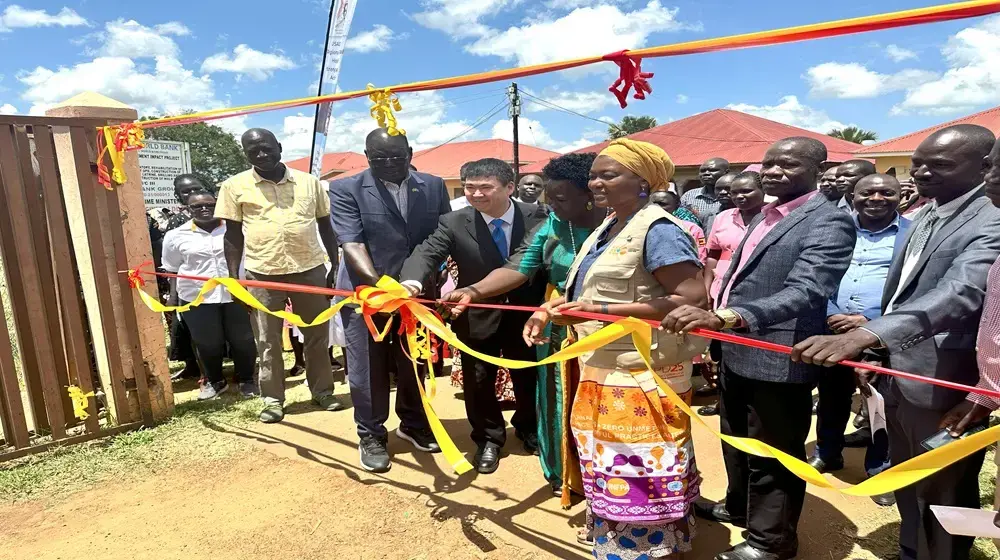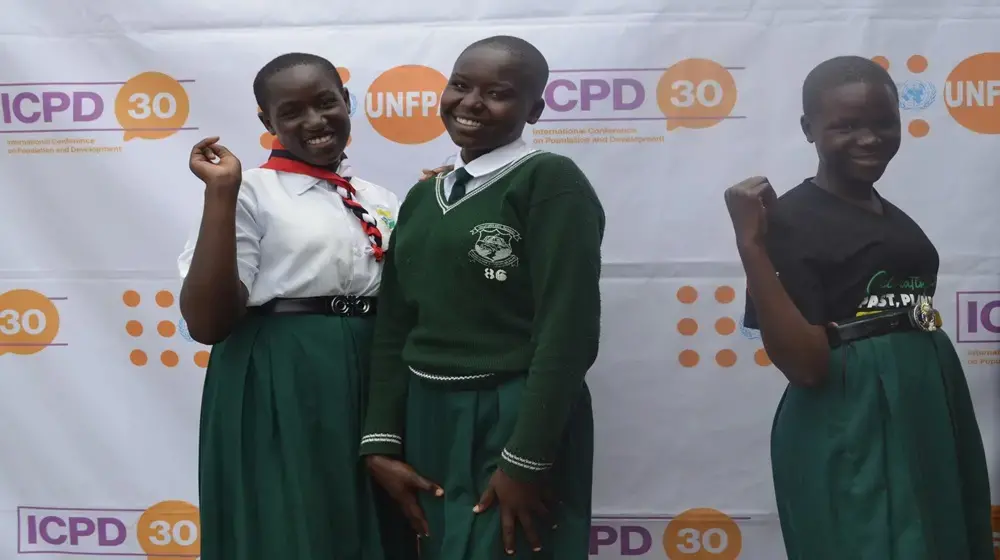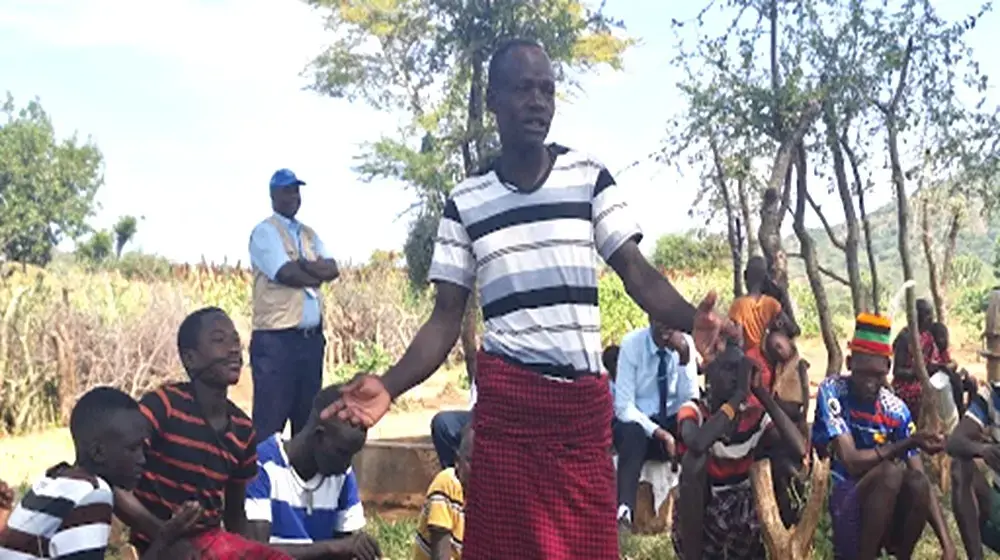It all began in 1988, when the then chairman of the district council of Kapchorwa district, Mzee Peter Kameron, used his position to pass a resolution making Female Genital Mutilation (FGM) among the Sebei community a mandatory cultural practice. Briefly define what FGM is-people may not know.
Historically, Mzee Kameron narrates, Sabiny chiefs were staunch defenders of FGM and at that time there was concern among the communities of strong external influences (anti- FGM campaigns) on the Sabiny culture which had to be protected.
It was only when Mzee Kameron got to hear messages on the anti -FGM campaigns in 2008 supported by UNFPA in the Sebei region focusing on celebrating positive cultural values, that he began to realize the dangers of the practice. This prompted Kameron and other elders to form the Sabiny Elders Association (SEA).
The elders concluded that FGM was indeed a destructive tradition and decided to review their traditional practices with a determined effort to support its abandonment. They chose to maintain positive cultural values among the Sabinys like singing, dancing and feasting and with support from UNFPA, organized annual Sabiny Cultural Days instituted to promote healthy traditions and dispel myths about FGM and other harmful practices.
Kameron became a reformed man, and at that time, even paraded two of his daughters, vowing never to allow them to go through FGM but rather keep them in school. To date, Mzee Kameron is one of the proud elders championing the cause for the abandonment of elimination of FGM/C in the Sebei region of Kapchorwa, Kween and Bukwo and with this advocacy, many Sabiny girls have been protected from FGM in exchange for an education.
This year, as we mark the zero-tolerance day to Female Genital Mutilation on February 6, the theme: Partnering with Men and Boys to Transform Social and Gender Norms to End Female Genital Mutilation, Mzee Kameron’s story is a great illustration of how men and boys can play a pivotal role in elimination of female genital mutilation.
FGM is not only a harmful cultural practice but also an infringement of human rights that violates the principles of equality and respect for human dignity. It impedes the enjoyment of rights of women and girls including sexual and reproductive health rights and exposes women to serious health, psychological, physical, and social consequences.
An example is the story of Martha Nguran Chepotumeyo, who at the age of 12, with seven Ugandan Pokot girls were forced to undergo FGM in neighbouring Kenya. She recalls how she faced double tragedy, first, through excessing bleeding and pain and then forcefully being married off by her parents in exchange for livestock. Since then, Chepotumeyo,says she suffers immense complications during child bearing.
In many FGM practicing communities, FGM is a strong social norm and is considered a required cultural practice. However, FGM is rooted in gender inequality and power imbalances between men and women – and it sustains them by limiting opportunities for girls and women to realize their rights and full potential in terms of health, education, income, and equality.
As the population continues to grow, it is expected to further increase the number of girls at risk, adding urgency to the global and national efforts to eliminate the practice by 2030 as set out in the Sustainable Development Goals.
Engaging men and boys
In the communities where FGM is practiced, men hold decision-making positions as cultural, religious institutional leaders, fathers, teachers, brothers and sons and in most circumstances denying women and girls their bodily autonomy to make their own sexual and reproductive health choices. Fortunately, these very institutions that uphold these beliefs and discriminatory norms, many of which are controlled by men, are also pivotal in ending it.
With eight years remaining in this Decade of Action, there is potential in eliminating this harmful practice through sustainable partnerships with men and boys.
Evidence shows that where tried, men and boys are challenging power dynamics in their families and communities and supporting women and girls as agents of change through community dialogues, peer education, intergenerational dialogues, mobile outreach, and faith-based organizations advocacy as proved by Mzee Kameron in Sebei.
For instance, under the UN Joint Programme on FGM, UNFPA and UNICEF have engaged men and boys to advance gender equality and eliminate FGM through the Empowerment and Livelihoods for Adolescents (ELA) clubs, Male Action Groups (MAGs) and engaging religious and cultural leaders among practicing communities. These programmes are encouraging men and boys to abandon harmful stereotypes, embrace respectful, healthy relationships, and support the human rights of all, and demonstrating that gender equality cannot be achieved without the involvement of men and boys.
Gender equality
Today, it is widely recognized that improving women’s status and advancing their rights yields benefits for whole societies. Ensuring access to sexual and reproductive health services and protection from gender-based violence, among other important measures, improves the health of families and the economic well-being of entire communities.
However, sad but true, women who have undergone circumcision continue to perpetuate the practice fearing that their daughters will not be married for cultural reasons. But what we have found in dialogues with men and boys is that they (men and boys) prefer women who are not circumcised. This is the message advocacy efforts should amplify to the communities so they abandon this harmful practice.
Advocacy and programming efforts should also support men and boys in recognizing their power and privilege to further the interests of women and girls, while simultaneously transforming masculinities and practicing accountability towards women and girls. We know that this is possible-it is already happening and we need to invest in such programmes.
Let us integrate gender-responsive programming and social norms change approaches into all programmes for sustainable elimination of these harmful practices.
National-level policies and legislation protecting the rights of girls and women, including the Prohibition of FGM Act (2010) should be fully implemented to ensure women and girls are protected and perpetrators of FGM are prosecuted. We can no longer justify FGM as cultural/traditional practice-it is a crime and a violation of human rights and must be treated as such!
We should also accelerate evidence-based practises learnt during implementation of the UN joint Programme to date , now that we now know what works and which strategies to scale up. Let us invest in generating data and evidence to inform programming and policy reforms and intensify our advocacy efforts with the government to integrate alternative live hoods for reformed cutters.
Strengthening partnerships is critical especially with government and donors to increase investment in ending all harmful practices including FGM in Uganda.
Lastly, we can accelerate the elimination of FGM by empowering girls and women to realize their rights and potential by ensuring access to education, healthcare, skilling and employment opportunities and ensure that no girl or woman is left behind.
Dr Mary Otieno is the Representative, UNFPA Uganda





